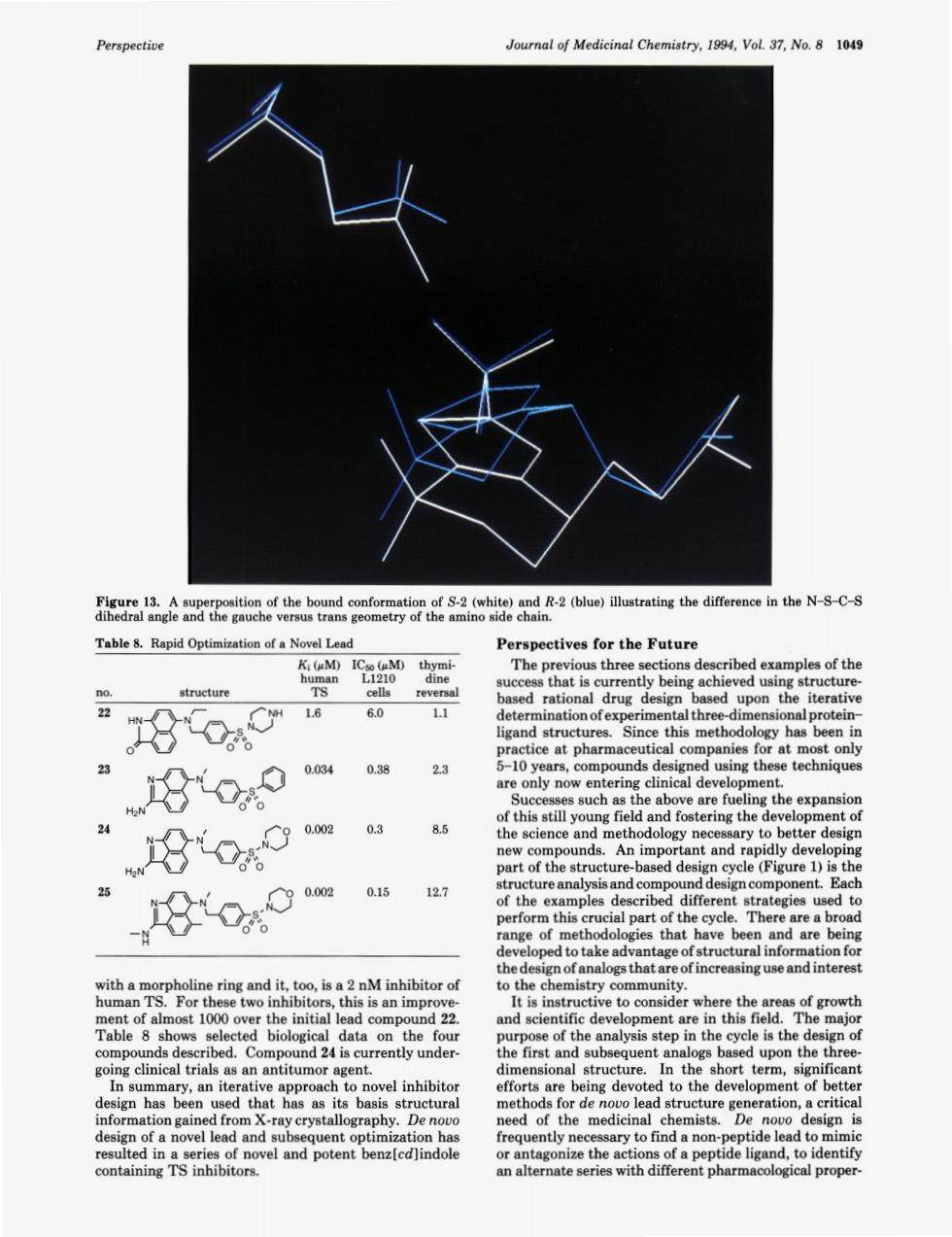正在加载图片...

Journal of Medicinal Chemistry,1994,Vol.37,No.8 1049 e()rating the diferc in the N Table 8.Rapid Optimization of a Novel Lead Perspeetives for the Future The previous three scribed examples of the structure being ach 6.0 upo 80 eter tion ofex thr at pharmace 800 23 0034 0.38 23 el ng t ent such as 80x0w 03 the sci better design 800 12 ture ana dc igncompo nent. -N gies that h e of increasing use and interest It is instruct s of grov mentofanot1000owe de and 24 is currently under upon ree e. th mma orts are being de ent of design of a novel lead and requently sary to find a non- and potent h doanmr Perspective Journal of Medicinal Chemistry, 1994, Vol. 37, No. 8 1049 \ u Y L \ / \ h Figure 13. A superposition of the bound conformation of S-2 (white) and R-2 (blue) illustrating the difference in the N-S-C-S dihedral angle and the gauche versus trans geometry of the amino side chain. Table 8. Rapid Optimization of a Novel Lead Ki (pM) IC50 (pM) thymi- human L1210 dine no. structure TS cells reversal 22 ~NH 1.6 6.0 1.1 00 0.034 24 25 H 0.38 0.3 0.15 2.3 8.5 12.7 with a morpholine ring and it, too, is a 2 nM inhibitor of human TS. For these two inhibitors, this is an improvement of almost 1000 over the initial lead compound 22. Table 8 shows selected biological data on the four compounds described. Compound 24 is currently undergoing clinical trials as an antitumor agent. In summary, an iterative approach to novel inhibitor design has been used that has as its basis structural information gained from X-ray crystallography. De nouo design of a novel lead and subsequent optimization has resulted in a series of novel and potent benz[cd]indole containing TS inhibitors. Perspectives for the Future The previous three sections described examples of the success that is currently being achieved using structurebased rational drug design based upon the iterative determination of experimental three-dimensional proteinligand structures. Since this methodology has been in practice at pharmaceutical companies for at most only 5-10 years, compounds designed using these techniques are only now entering clinical development. Successes such as the above are fueling the expansion of this still young field and fostering the development of the science and methodology necessary to better design new compounds. An important and rapidly developing part of the structure-based design cycle (Figure 1) is the structure analysis and compound design component. Each of the examples described different strategies used to perform this crucial part of the cycle. There are a broad range of methodologies that have been and are being developed to take advantage of structural information for the design of analogs that are of increasing use and interest to the chemistry community. It is instructive to consider where the areas of growth and scientific development are in this field. The major purpose of the analysis step in the cycle is the design of the first and subsequent analogs based upon the threedimensional structure. In the short term, significant efforts are being devoted to the development of better methods for de nouo lead structure generation, a critical need of the medicinal chemists. De novo design is frequently necessary to find a non-peptide lead to mimic or antagonize the actions of a peptide ligand, to identify an alternate series with different pharmacological proper-